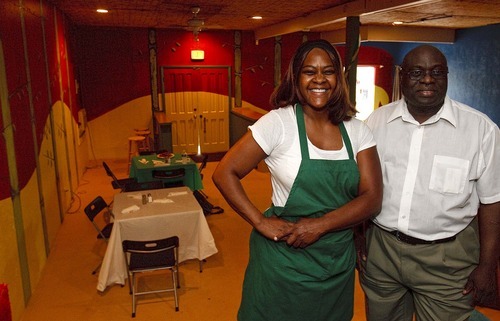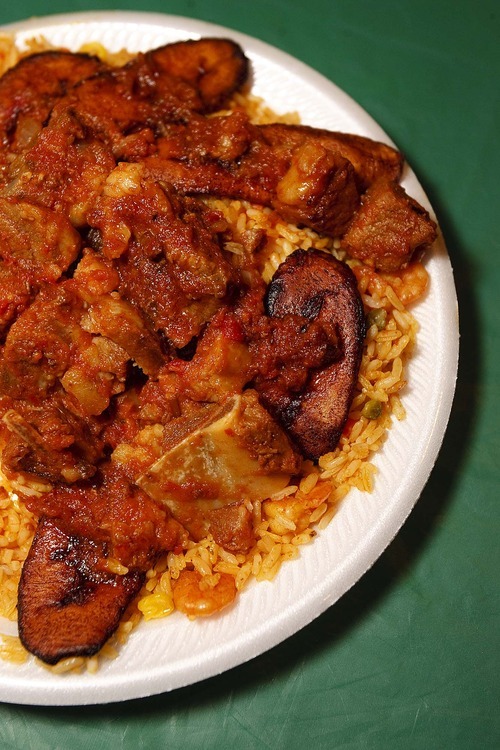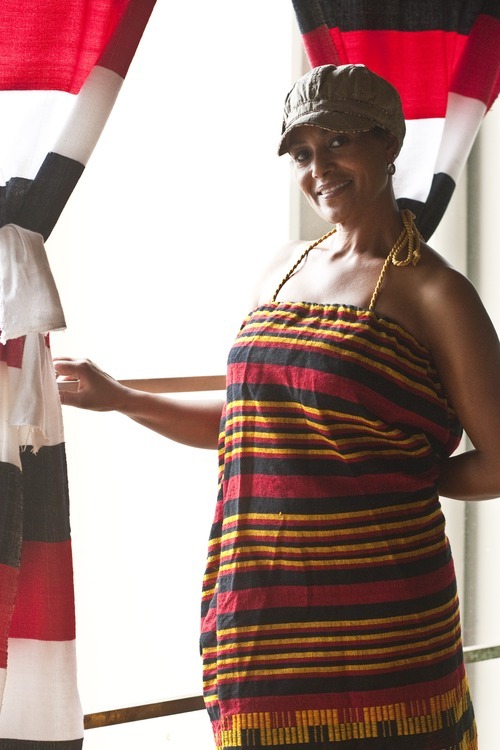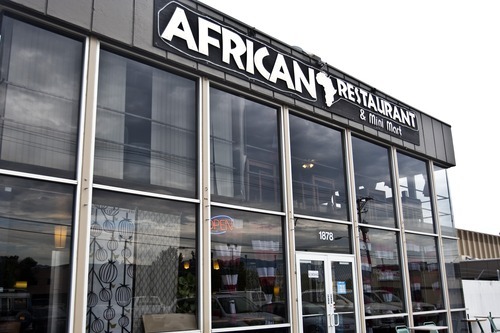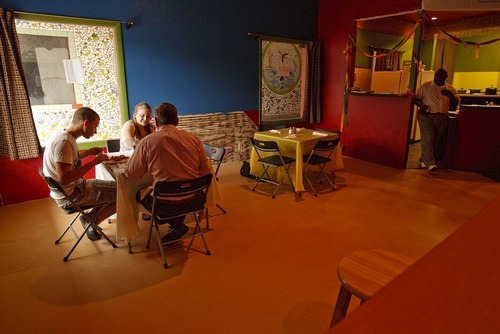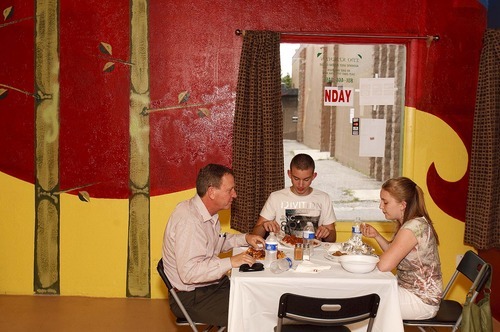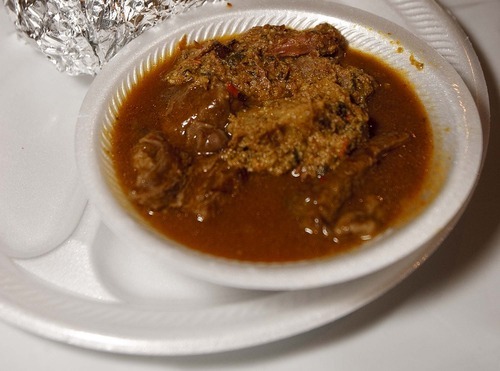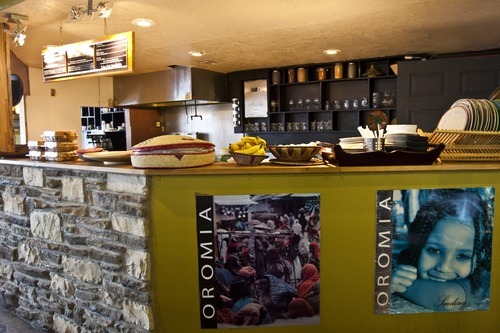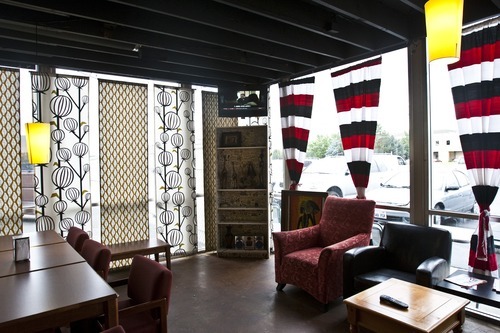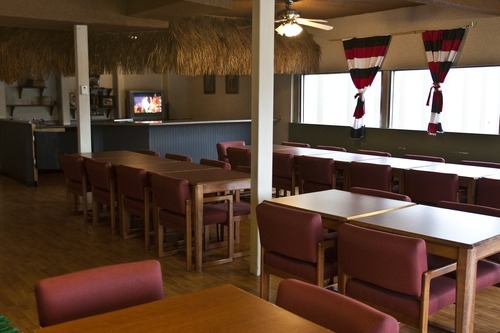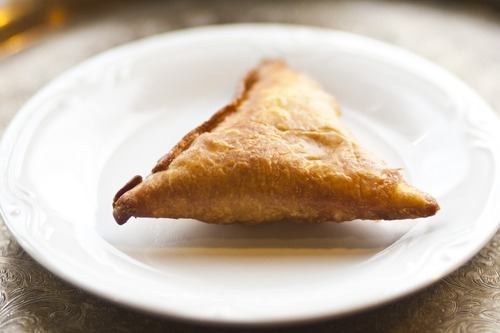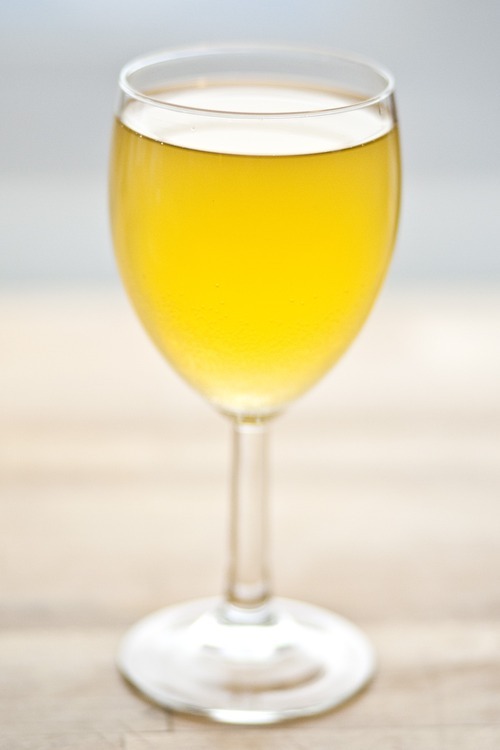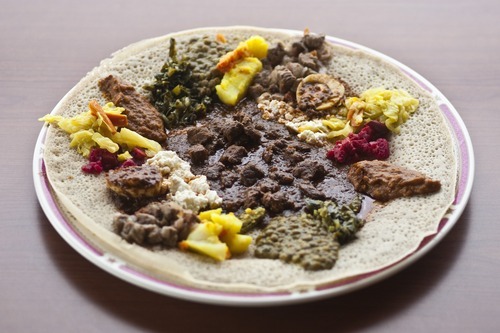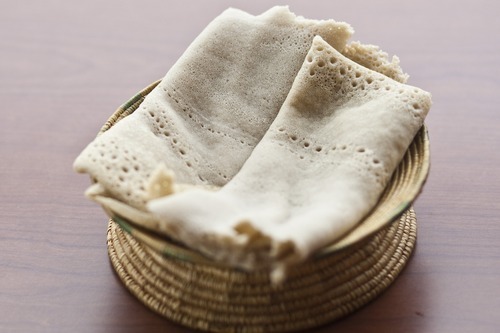This is an archived article that was published on sltrib.com in 2011, and information in the article may be outdated. It is provided only for personal research purposes and may not be reprinted.
I'm routinely wowed by the depth of the Wasatch Front's dining scene, which supports an ever-expanding mix of global cuisine.
As a consequence, I like to think Utah supports a reasonably adventurous dining population, which I fancy myself a member of. I've eaten my way through plenty of interesting dishes, with tongue, heart and kidneys, plus bone marrow, eel and ostrich. Maybe a new frontier for other intrepid diners like me might be regional African cuisine.
African Restaurant • Despite the suggestion of that continental-spanning name, what's served at this 4-year-old restaurant is strictly Ethopian cuisine.
Central to the cuisine is the pancake-like flatbread injera — budenaa in the Oromo language of Ethiopia — which is spongy in texture and carries a slight tangy flavor from overnight fermentation. Budenaa also happens to function in lieu of cutlery, as the custom is to tear pieces of bread off with your right hand, to scoop and grab, and of course, eat it, too.
The menu is constructed around a range of combination plates (a la carte is offered, but isn't the focus), sized for one diner to four, with the price less than $10 per person. On my first visit, our host/waitress suggested the "ultimate combo" plate (wal-maka) for three to four people ($29.95).
While waiting for our platter, the restaurant serves just one appetizer, the sambussa (99 cents), which are reminiscent of Indian samosa. These hand-sized pastry pockets are stuffed with a mixture of chopped vegetables and lentils — with the main difference being that they are served cold, which is an odd surprise. Although this appetizer was enjoyable, more information about it would have been welcome. Indeed, throughout our meals, details were hard to come by, unless we piped up and specifically asked.
It took a while for our combo plate to arrive, which was understandable when we finally spied it. Layering the 18-inch plate was a base of soft budenaa, on top of which was a vividly colored array of meat and vegetable selections from the larger menu. Additional budenaa were dropped off in bowls.
The combo plate featured one spicy and one mild beef item (waaddii, kochee foonii), ayib (a creamy Ethiopian cottage cheese), raafuu (collard greens), dimaa (red beets and potatoes) and dabaqula (yellow squash), plus a couple of hard-cooked eggs for good measure. The meat options are static, while the veggie options can change daily. A highlight was the kochee foonii that centered the dish (so much so I ordered it a la carte on a subsequent visit for $7.50). This berbere, or Ethiopian spice blended beef dish, packed a wonderful kick of heat, piquant flavor and tender stewed beef.
—
Edo Kitchen • In contrast to the more-established African Restaurant, Edo Kitchen has recently reached the three-month mark. Hiding in the rear of a small strip mall on 21st South, this is a much more austere eatery.
Inside the humble building, the walls are painted brightly in reds, yellows and greens, while the dining area is functional with a handful of fold-out tables and matching chairs. Food comes served in styrofoam bowls and plates; beverages are limited to a handful of sodas and water ($1.25) that arrive straight from the fridge, served plainly in their bottle.
Don't expect a formal menu either. If you don't place your order at the counter — genial owner and chef Easter Momodu will soon be table-side with a large picture board highlighting the six main dishes.
If you're a complete novice when it comes to West African food, you might want to take a moment to pick Momodu's brain. Even experts should take the time to chat with the Nigerian native, who is friendly and eager to share his nation's cuisine with Utahns.
Egusi soup ($8) was the first dish recommended by Momodu, one of the most popular dishes from his homeland. The soup, like many West African dishes, is served with fufu. Thefufu, made from cooked and pounded white yam, serves as both implement and starch. It arrives at the table piping hot, wrapped in foil with a texture akin to a doughy, elastic, mashed potato, and it possesses a relatively neutral flavor and a hint of sweetness.
The egusi soup was a spicy broth, thickened with melon seed, and in this instance filled with nuggets of soft, stewed beef. Momodu was eager for us to dig in using the fufu. This was no mean feat, but practice made each bite easier.
I had less success with the ogbono soup ($8). This oily, mildly seasoned soup featured mashed okra and sadly, all too tough and fatty hunks of goat meat. With the new schooling in fufu a work in progress, plus the slippery okra and chewy goat, I faced a losing contest of dexterity with the dish. When I finally conceded defeat, and deployed the plastic utensils supplied with each dish, Momodu looked a tad disappointed.
Far more accessible are Edo's rice dishes: shrimp-fried rice ($8), rice with coconut stew and plantain ($8), and rice with fried fish ($7). On a repeat visit, due to some miscommunication, I managed to seemingly order a mix of all three items, but what a delicious mix-up it was. The rice was a simple enough affair, studded with peas, carrots, green beans and a mild seasoning, but scrumptiously sweet cooked plantain layered the rice.
Finally, the piece de resistance, served for the table to share, was a whole fried tilapia ($15). Momodu explained how he dries the fish, smokes it in-house, then roasts it up with a blend of spices — lopping the fish head off for Western preferences.
What remains, though, is essentially the whole fish: rich skin, bones and bags of moist flesh. The tilapia we ordered for two was enough to feed three or four. For solo diners, rice dishes can also be topped with smaller portions of cubed fish. The mix of plantain, rice, stew and fish was a perfect marriage of sweet, spicy and smoky.
Neither restaurant served desserts. Which brings me to this caution: Despite interesting dishes at both eateries, the picky or unadventurous eater should proceed with caution. For American diners, both restaurants had quirks, such as retiring service, bare bones ambiance or unconventional dining approaches.
But if you enjoy new flavors, textures and a glimpse into other cultures' cuisines, both restaurants offer intriguing insights. Just be ready to dig in, get your hands messy and don't be shy to ask questions.
Salt Lake Tribune restaurant reviewer Stuart Melling blogs at gastronomicslc.com. Send comments about this review to food@sltrib.com or post a response at facebook.com/tribremix. —
HH
African Restaurant
Food • HH
Mood • HH
Service • HH
Noise • bb
Enjoy the traditional dining experience and cuisine of Ethiopia without leaving town. Also get to grips with Budenaa, both utensil and bread, unique to East African dining.
Location • 1878 S. Redwood Road, Salt Lake City; 801-978-9673
Online • http://www.africanrestaurant.org
Hours • Monday to Saturday, 10 a.m. to 9:30 p.m.
Children's menu • No
Prices • $
Liquor • Beer and wine
Corkage • Free
Reservations • No
Takeout • Yes
Wheelchair access • Yes
Outdoor dining • No
On-site parking • Yes
Credit cards • Visa, Mastercard, Discover —
Hhj
Edo Kitchen
Food • Hhj
Mood • H
Service • HH
Noise • b
A humble and austere eatery, in terms of operations and menu. Adventurous eaters can experience the tastes of West African cuisine and the friendly, knowledgeable owner and chef Easter Momodu.
Location • 815 E. 2100 South, Salt Lake City; 866-264-3979
Hours • Tuesday to Thursday, 11 a.m. to 9 p.m.; Friday and Saturday, 11 a.m. to 10 p.m.; Sunday, 3 to 9 p.m.
Children's menu • No
Prices • $
Liquor • No
Reservations • No
Takeout • No
Wheelchair access • Yes
Outdoor dining • No
On-site parking • Yes
Credit cards • All major


